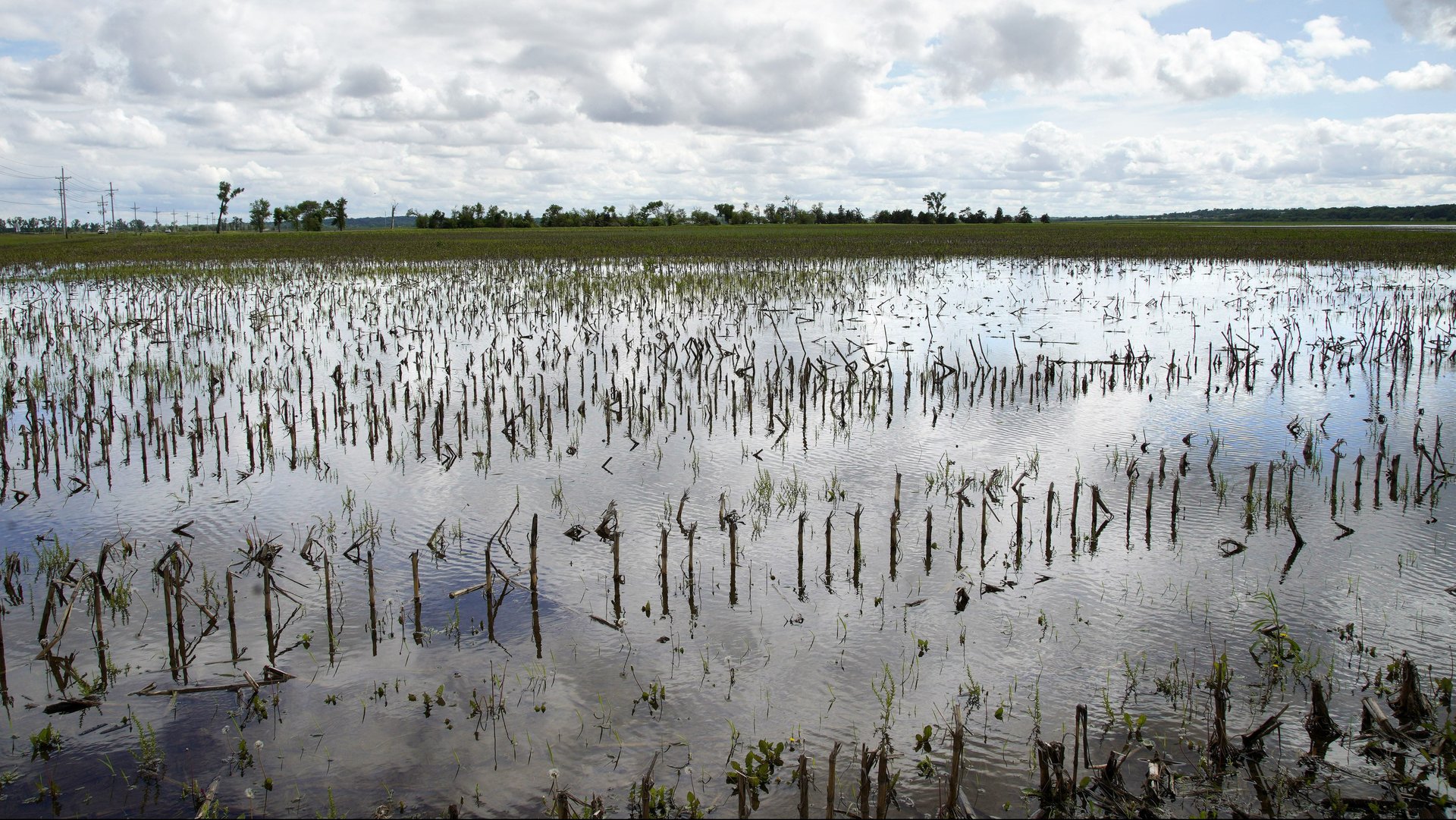As the climate crisis heats up, flooded farms in the Midwest can’t plant corn
The angst on farmer Twitter is palpable. Across the Midwest, torrential rains have soaked the fields, leaving the sodden soil unsuitable for planting millions of acres with corn, soybeans, and other crops, presaging a terrible harvest. Seeds are usually in the ground this time of year. But thanks to floods, unrelenting rains, hail, and scores of tornadoes—nearly 200 more than average (paywall) by this point in the year—the season is off to one of the worst starts in history. #NoPlant19 is trending on Twitter.


The angst on farmer Twitter is palpable. Across the Midwest, torrential rains have soaked the fields, leaving the sodden soil unsuitable for planting millions of acres with corn, soybeans, and other crops, presaging a terrible harvest. Seeds are usually in the ground this time of year. But thanks to floods, unrelenting rains, hail, and scores of tornadoes—nearly 200 more than average (paywall) by this point in the year—the season is off to one of the worst starts in history. #NoPlant19 is trending on Twitter.
In Oklahoma, every county is in a state of emergency. The Midwest is having its wettest 12 months ever (paywall). These extremes follow on a blistering 2018, the fourth hottest year on Earth, just behind “2016 (warmest), 2015 (second warmest), and 2017 (third warmest),” according to the 139-year climate record of the US National Oceanographic and Atmospheric Administration.
Every day tractors don’t enter the fields means a higher chance of crop failure (and less crop insurance on whatever makes it into the ground). On May 28, the USDA announced that US farmers have just 58% of their corn crop in the ground (versus a five-year average of 90% by this time) and 29% of the soybean crop (compared to 66%). Those are among the lowest rates in history. Other farmers may end up planting nothing and have declared a total crop loss.
“The frequency of these disasters, I can’t say we’ve experienced anything like this since I’ve been working in agriculture,” John Newton, chief economist at the American Farm Bureau Federation, told the Washington Post (paywall).
The stories across the Midwest are wrenching. Scrolling through the #NoPlant19 hashtag turns up dozens of posts about farmers staring out at soggy fields or farm equipment foundering in deep mud. It’s likely many will see their harvests devastated this year, and global grain prices could spike.
If this sounds like part of the climate crisis, it is. As the planet warms, extremes in heavy rain and drought are becoming the new normal, says Sean Sublette, a meteorologist at Climate Matters. It’s not that every weather event is the result of global warming. But the probability of extreme disaster rises as humans increase the levels of carbon dioxide, now at their highest point in the planet’s atmosphere in 3 million years. Greenhouse gases trap heat and destabilize the climate system. Higher temperatures “supercharge” evaporation, leading to droughts and desertification. Water is dumped back on arid soil in torrential rains, creating flooding.
This year’s crop trouble is a preview. A study by the Proceedings of the National Academy of Sciences this year predicted widespread crop failures as temperatures rise, including US corn production falling by almost half if temperatures rise by 4°C. That’s the world’s current trajectory without swift action, according to a World Bank study calling the scenario “cataclysmic.” Were the world to act to keep temperature increases below 2°C, crop reductions would be about 18% lower.